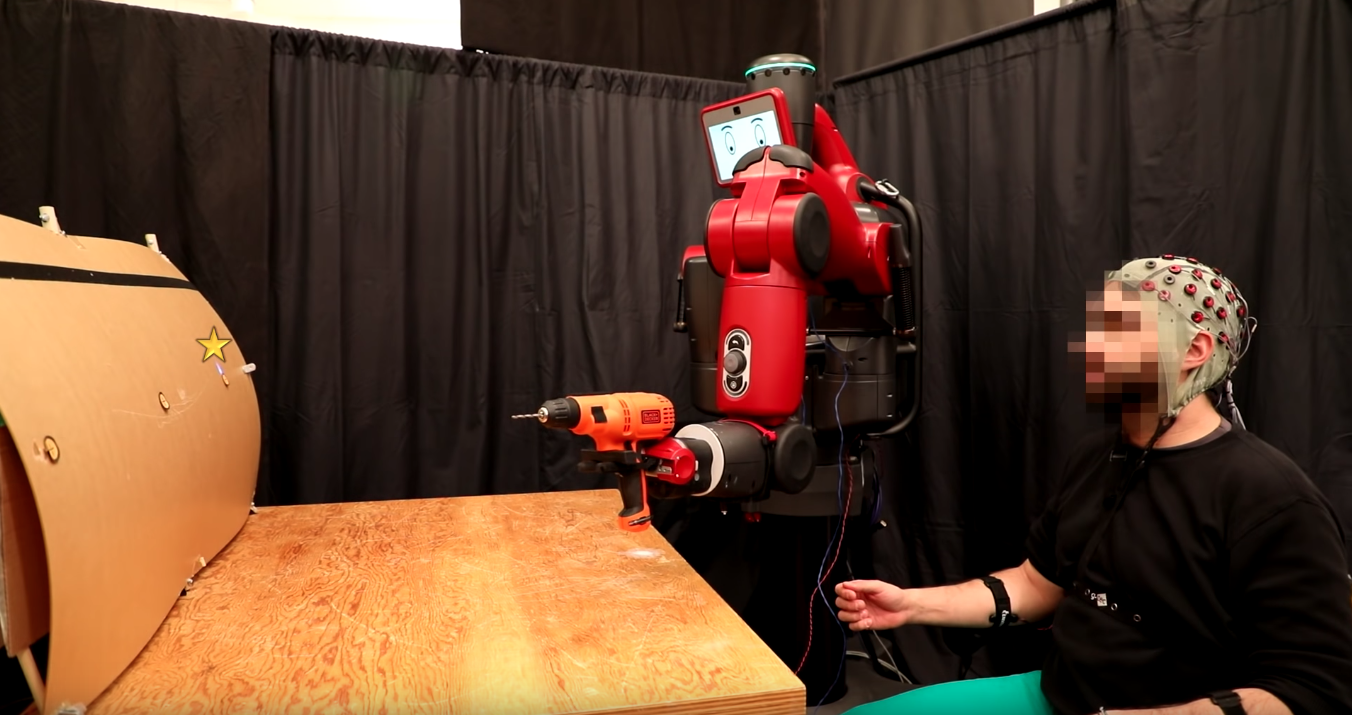Watch how this robot is controlled by brain waves and hand gestures
It is now possible to control robots with our thoughts, helping correct them when they do something wrong by merely noticing their mistake.
This is the promise of a system developed by the Massachusetts Institute of Technology's Computer Science and Artificial Intelligence Laboratory (CSAIL). Revealed this week, the system allows human supervisors to instantly stop and correct a robot when it makes a mistake, thanks to monitoring their brain activity and muscle actions.
Read More:
Researchers harnessed the power of brain signals called error-related potentials, or ErrPs, which they found to naturally and subconsciously occur when people notice mistakes. When the robot supervision system detects an ErrP, the robot is stopped so the user can correct it.
Corrections are made using hand gestures, which are captured and relayed to the robot by measuring the person's muscle activity.
To show how the system works, MIT employed a robot called Baxter, made by Rethink Robotics to move a power drill to one of three possible targets on the fuselage of a mock airplane. Without human supervision, Baxter hit the correct target 70 percent of the time, but with the help of the brain monitoring kit looking for ErrPs, accuracy increased to 97 percent.
Joseph DelPreto, PhD candidate and lead author on a paper about the project, said: "What's great about this approach is that there's no need to train to think in a prescribed way. The machine adapts to you, and not the other way around."
DelPreto added: "By looking at both muscle and brain signals, we can start to pick up on a person's natural gestures along with their snap decisions about whether something is going wrong. This helps make communicating with a robot more like communicating with another person."
Although this demonstration focuses on the construction industry, the MIT team hopes the technology could one day be used to help the elderly, or those with limited mobility or language disorders to communicate with robotics and computers by instinctive thoughts alone.
CSAIL director Daniela Rus said: "We'd like to move away from a world where people have to adapt to the constraints of machines. Approaches like this show that it's very much possible to develop robotic systems that are a more natural and intuitive extension of us."
